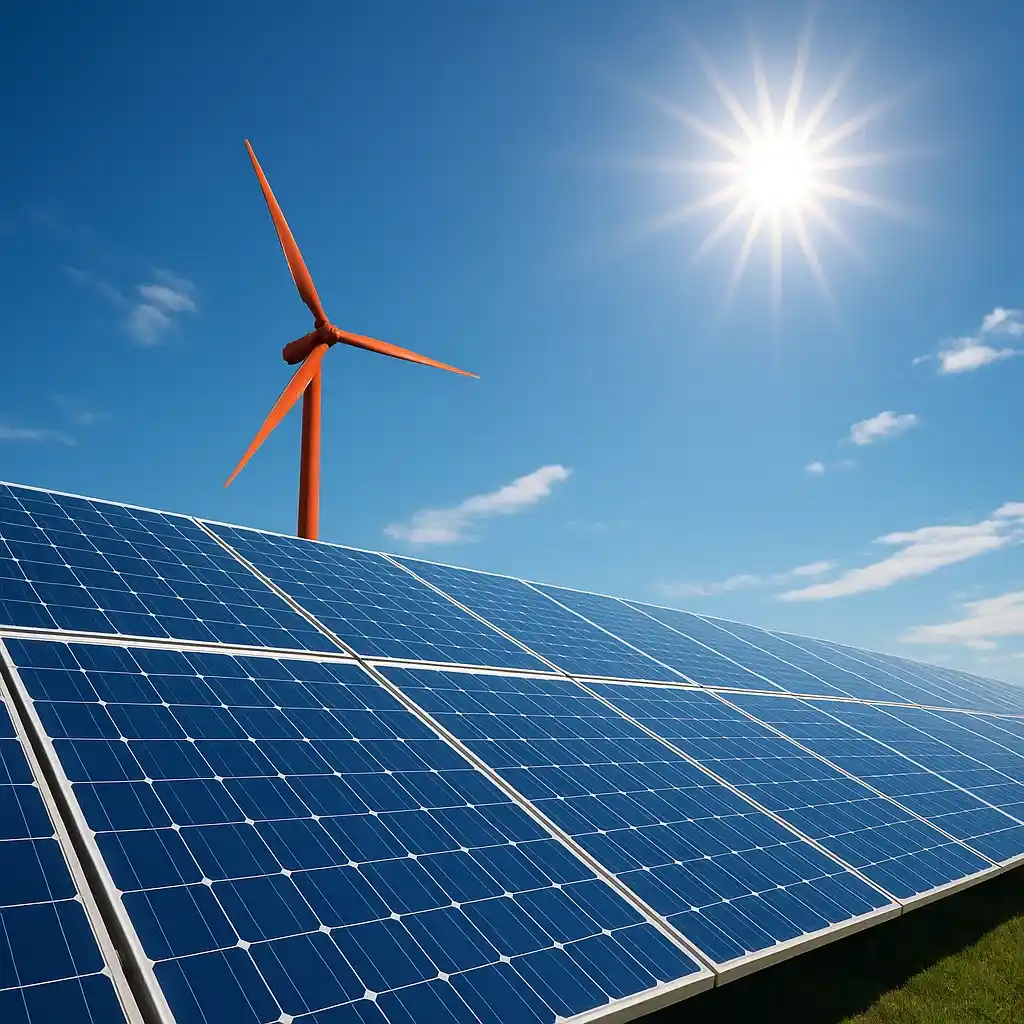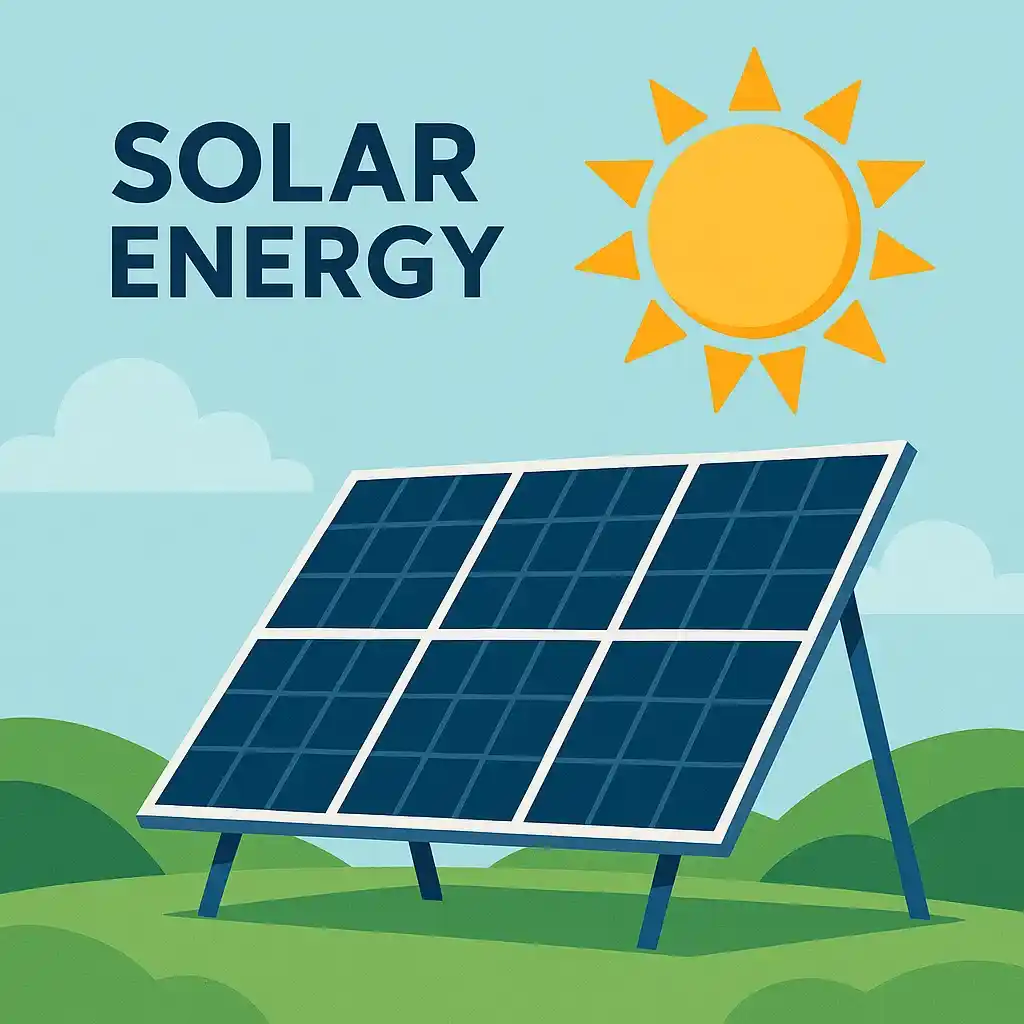- 021-91034194
- Info@pishco.ir
- Tehran, Sa'adat Abad
Home » What is solar energy and how is it generated into electricity?
Solar energy: Renewable energies are gradually replacing fossil fuels as the main source of energy supply. Just look at the growth trend of solar energy: in 2009, only about 21 terawatts of solar energy were produced, but by 2020 this number had increased to about 850 terawatts!
With the dramatic reduction in the cost of installing solar panels, many businesses are taking advantage of this opportunity to reduce their energy costs. You may be interested in learning how solar energy is produced and why using it can be one of the best options for providing the electricity your business needs.
These days, solar energy has become a powerful alternative to fossil fuels, meeting energy needs without creating greenhouse gases, water pollution, or other damaging environmental impacts.
Since solar panels can be installed almost anywhere—even in cold regions—and the energy production process continues as long as sunlight is available, this type of energy has become one of the most cost-effective and sustainable options.
Suggested article: What is biofuel and what are its uses?

There are three main ways to harness solar energy: photovoltaics, solar heating and cooling (SHC), and concentrating solar power (CSP).
Photovoltaic technology uses an electronic process to convert sunlight directly into electricity. This method can be used to power a variety of devices—from small devices like calculators or road signs to homes and even large commercial facilities.
In contrast, two other technologies, solar heating and cooling (SHC) and concentrating solar power (CSP), harness the sun’s heat. SHC systems are typically used for space or domestic hot water heating, while CSP concentrates the sun’s heat and uses it to drive turbines to generate electricity.
Recommended article: Clean fuel and energy
If you’ve ever looked at a solar panel, you’ve probably seen it made up of lots of little squares. These squares are solar cells, or photovoltaic (PV) cells. When these cells—usually made of materials like silicon—are exposed to sunlight, some of the light is absorbed by the semiconductors.
As a result, the absorbed energy causes electrons within the cells to be released and begin to move freely. This movement creates an electric current. However, the energy produced by solar cells must be converted into usable electricity before it can be used in various devices.
How is solar energy converted into electricity?
Solar panels produce a type of current called direct current (DC), which means electricity flows in only one direction. But the challenge is that most of the electrical appliances and devices we use every day operate on alternating current (AC)—current in which electrons can change direction.
To integrate solar power into these systems, the electricity generated must be converted to alternating current by a device called an inverter. After this conversion, solar power works just like utility power, so you don’t need to worry about your appliances or work equipment—everything will work as it should.
While we are still far from eliminating fossil fuels, renewable energy is gradually reducing our dependence on polluting sources. In 2021, sources such as wind and solar provided about 10% of the world’s electricity. This trend shows that the move towards a cleaner future is underway.
In addition to its environmental benefits, solar energy can provide significant opportunities for businesses. Here are some of the main benefits of using this energy source:
1. The sun, an endless source of energy
The most obvious advantage of solar energy is that the sun isn’t going to go out anytime soon. Scientists estimate that the sun will continue to shine for at least another 5 billion years, so there’s no need to worry about running out of this energy source.
2. Panel efficiency is improving
The efficiency of solar panels has improved dramatically over the years. In 2012, the highest efficiency of solar cells was just under 18%, but by 2020, researchers at NREL had managed to create a device with an efficiency of 47.1%. Although this record has not yet been put into mass production, the average efficiency of current panels is between 15 and 20%—enough to power many businesses every day.
3. Significant reduction in energy bills
Solar panels help businesses become more resilient to fluctuations in electricity prices. Because the electricity is generated on-site, dependence on traditional suppliers is reduced and costs are reduced.
According to EnergySage, businesses that previously spent about $1,950 per month on electricity have seen their electricity bill drop to about $500 after installing a solar system. If your system produces excess energy, you can even sell it back to the grid for extra revenue—although this option varies depending on local energy regulations.
4. Significant reduction in installation costs
The cost of installing solar systems has dropped dramatically over the past decade. According to the U.S. Department of Energy, installation costs have fallen by 75% since 2010 and are still falling. Furthermore, panels last an average of 25 years, often recouping the entire investment within the first 5 to 7 years—and then the electricity is virtually free.
5. Simple and low-cost maintenance
Solar panels require little maintenance. They have no moving parts and are weatherproof. Typically, the system will remain in top condition with just a cleaning once or twice a year. This means that ongoing maintenance costs are also very low.
6. Reducing carbon footprint and being environmentally friendly
The sun is one of the cleanest sources of energy in the world. Unlike fossil fuels, solar energy does not cause air pollution or produce greenhouse gases. The carbon footprint of solar panels is up to 20 times smaller than that of coal-fired power plants.
This benefit isn’t just limited to the environment. In a Statista survey, 45% of consumers said they prefer to buy from brands that operate sustainably. 92% said they trust companies that are environmentally and socially conscious more. So using solar energy can create a real competitive advantage in the marketplace.
7. Strengthening energy security and grid independence
With the increasing volatility of fossil fuel prices and the risk of power outages, relying on solar energy can increase your business’s energy security. Because you are no longer reliant on traditional suppliers, market fluctuations affect you less.
Also, if you have an energy storage system, you can store excess electricity for use when needed—for example, on cloudy days or during grid outages—and rest assured that you will have a stable power supply.

In recent years, the dramatic growth of solar energy technologies has paved the way for the widespread use of this clean source. Based on existing global energy policies, the use of solar, wind, and geothermal power plants is considered economically justifiable and cost-effective.
Utilizing the huge potential of renewable energies will be achievable, provided that infrastructure such as advanced technology, initial capital, specialized human resources, and the existence of long-term policies to support this field are available.
Iran has a huge potential in the field of solar energy among its diverse renewable energy sources. This has attracted the attention of domestic and foreign investors to the development of solar infrastructure in the country. With an area of over 1.6 million square kilometers and about 300 sunny days per year, Iran receives an average of 2,200 kilowatt-hours of radiation per square meter—almost double that of Germany, a country that is considered a pioneer in the use of solar energy.
If just 1% of the country’s area were dedicated to installing solar panels with an efficiency of 10%, it would be possible to produce about 9 million megawatt hours of energy daily. In 2012, the Iranian government announced a target of installing 53,000 megawatts of power plant capacity for electricity generation.
Achieving this goal was planned based on the active participation of independent producers and the attraction of domestic and international investors. According to the provisions of the Fifth Economic, Social and Cultural Development Plan of the country, it was expected that the private sector would provide at least 270 megawatts of the required renewable energy capacity.
Based on technical studies and detailed surveys, including climatic conditions, direct sunlight, and suitable geographical locations, the country’s solar electricity production potential is estimated at about 14.7 TWh.
Given the 8.9% annual growth in the country’s electricity demand between 2001 and 2007, renewable sources are expected to account for about 2% of Iran’s total electricity generation capacity by 2030. The installed capacity of solar cells is also projected to reach 2.8 gigawatts by then—a goal that would require an investment of more than $2.8 billion.
Currently, small-scale solar power plants are operating in cities such as Shiraz, Semnan, Taleghan, Yazd, Tehran, Hamedan, and Khorasan. Among them, Yazd has the largest installed capacity, generating nearly 58.5 megawatts of solar electricity. After that, Fars and Hamedan provinces are in second and third place, respectively. Studies show that Qazvin province also has a high capacity for the development of solar power plants.
Suggested article: What is green fuel and how is it produced?
One common concern businesses have about solar panels is whether these systems will still work in cloudy or rainy weather conditions—such as cold winter days—or whether they are only useful on warm, sunny days.
The good news is that solar panels continue to work regardless of weather conditions.
While these panels are most efficient on bright, sunny days, they can still produce electricity on cloudy mornings or short winter days. The amount of energy produced will be reduced, but it won’t stop completely.
More interestingly, rain can even help improve the performance of panels, as it washes away dust or contaminants from the panel’s surface, facilitating the passage of light and increasing efficiency.
It is interesting to note that solar panels perform better in cold weather. These systems are usually most efficient in the temperature range of 15 to 35 degrees Celsius.
As temperatures rise above this range, the efficiency of the panels may be affected. According to CED Greentech, at very high temperatures, the efficiency of the panels may drop by between 10 and 25 percent.
لطفا فرم زیر را به دقت پر کنید تا مشاورین ما در اسرع وقت با شما تماس حاصل فرمایند.
Please fill out the form below carefully so that our consultants will contact you as soon as possible.